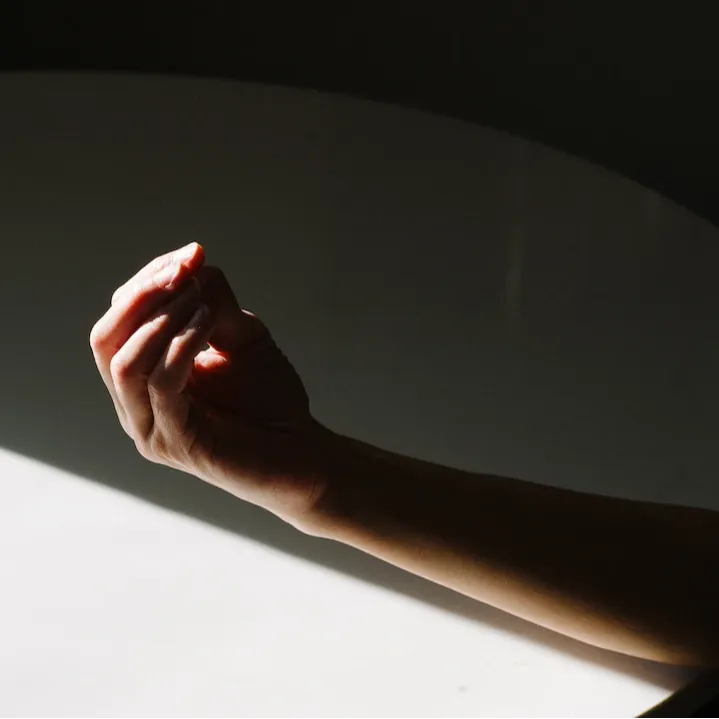Your Somatic Profile:
The Adapter
Your nervous system developed protective adaptations following a significant physical event—surgery, injury, accident, or illness. Thomas Hanna* calls this the "Trauma Reflex." These adaptations were intelligent responses that helped you heal and cope, or that you were taught, but they may have become unconscious habits over time.
*[Somatics by Thomas Hanna]
"I'm doing my best to keep on going."
The Hidden Pattern:
Your nervous system created protective compensations that were essential during recovery.
But even long after the healing phase, these adaptations can stay active beneath awareness, shaping how you move, stand, and feel in your body.
What helped you stabilize then, may now be keeping you stuck in asymmetry, discomfort, or effortful movement.
Why This Pattern Developed
Your Adapter pattern likely formed in response to:
- Surgery, injury, or medical procedures
- Accidents or physical trauma
- Significant illness or health events
- Any experience that forced your body to protect or rely on one side

How this shows up in your body
- Tendency to favor one side or position
- Feeling uneven, off-balance, or “twisted”
- Sleeping in the same position every night
- Sense that something shifted—and you’re still adjusting
- Subtle avoidance or disconnection from one side of your body
- Movements that feel guarded, stiff, or fragmented
- Movement compensations that became routine—limping, guarding one side, or sleeping in protective positions—can reinforce asymmetry long after the original event

Common pain points and physical symptoms you may experience
- Scoliosis or spinal curvature
- Sciatica or nerve pain down one or both legs
- One-sided knee, hip or back pain
- Chronic tilting or leaning to one side
- Stiff or frozen shoulder
- Pain in areas far from the original injury (compensation)
- Imbalanced walking or poor coordination
- Uneven muscle tone
- Postural “holding” or gripping
- General loss of fluidity and freedom in movement

According to Hans Selye’s General Adaptation Syndrome, the body responds to ongoing stress by adapting — first through an alarm response, then resistance, and finally through patterns of compensation and breakdown when stress doesn’t resolve.
The Adapter pattern reflects this stage of long-term adaptation — when your body shifts, protects, or favors one side to keep going after injury, illness, or emotional strain.
These changes were intelligent. They helped you heal, adjust, and survive what life asked of you.
But now, your nervous system may be ready to receive new information —to readapt positively, and find a more symmetrical, functional way to move through life.
The good news?
What was learned through adaptation can be gently recalibrated with the right kind of process.
THE TAKEAWAYS

The Hidden Pattern
Your nervous system created protective compensations that were essential during recovery. What helped you stabilize then may now be keeping you stuck in asymmetry, discomfort, or effortful movement.

What This Means
You’re not broken—your body adapted wisely. In the face of injury or illness, your nervous system chose safety first—creating compensatory patterns to stabilize and protect you.

Somatic Learning Goals
Learn to sense your dominant pattern. Restore sensory-motor connection to the injured /protected side. Rebuild symmetry. Reinforce diagonal movement pathways. Re-integrate full-body function.

If this sounds familiar, you’re not imagining it—and it’s not “just aging.”
Many people feel stuck in lingering pain, awkward movement, or subtle imbalances years after the original event has passed.
That’s because the nervous system remembers the trauma—and the protective patterns stay “on” until they’re consciously updated.
You didn’t do anything wrong.
This pattern was a smart, involuntary response, and with the right process, you can gently unwind it.
Note:
This quiz draws on Hans Selye’s General Adaptation Syndrome, a widely recognized model of how the body responds to stress in three stages: alarm, resistance, and exhaustion. Chronic or unresolved stress may lead to long-term adaptations in posture, movement, and energy — patterns that can be updated through gentle, brain-based learning.
Now let’s help your brain learn something new.
You’ve just uncovered an important pattern in your nervous system—and now it’s time to take the next step.
Hi, I'm Adrienne and I've been a movement educator and clinical somatic practitioner for over 20 years.
In this short video, I’ll show you:
- Why these patterns develop (and why they stick around)
- How they affect your body, your energy, and even your emotions
- What it really takes to change them—gently, from the inside out
And I’ll introduce you to UNA-The 20 Minute Movement Makeover System, so you can start re-wiring your responses and moving with more ease—right away.
Click play to learn what your body has been trying to tell you—and how to finally respond with something that works.
Your Next Step: Try The Moovy Studio Membership
You don’t need to figure this all out—you just need to start where you are.
Inside The Moovy Studio Membership, you'll access the UNA 20 Minute Movement Makeover System, where you’ll experience gentle, brain-based lessons that help you decompress, re-coordinate, and rediscover your somatic intelligence—without strain or pressure.
Just 20 minutes can shift your entire experience of being in your body.
⇨Start your 10 day Guest Pass.
Gentle. Brain-based. Designed for you.
Start Your 10-Day Guest Pass

My elbow was replaced. Now with these lessons my elbow is way more available to bend, and the stiffness is much better. This is a whole human experience- not just our parts, but experiencing a whole interconnected integrative dynamic experience!
-Shannon
I came to UNA for aid in recovery from a painful injury. I am staying for the improvement in balance and flexibility, plus a renewed sense of empowerment. This is the most life improvement I've experienced in years. It is encouraging to think this method can help many people. The virtual delivery is much appreciated!
